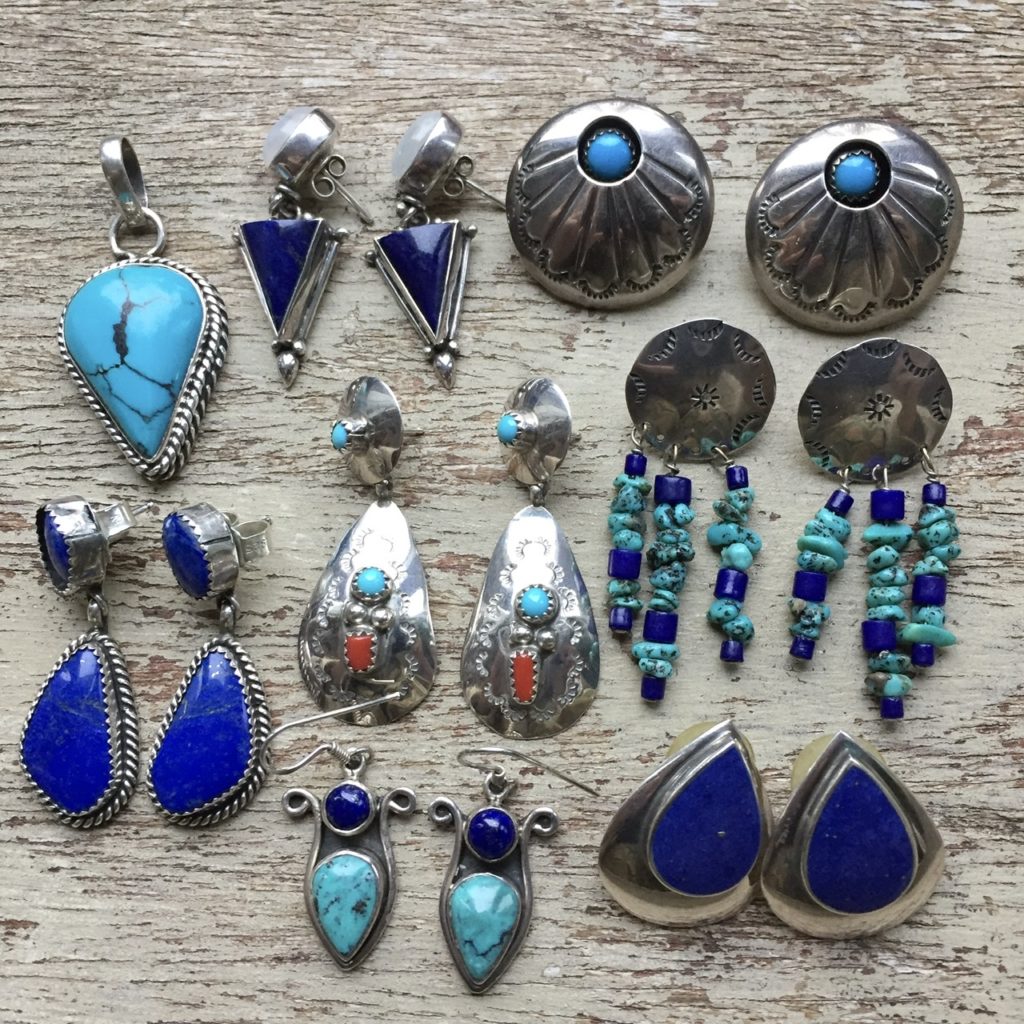Prized as a stone for thousands of years, turquoise has to be one of my absolute favourite stones to wear. My personal jewellery collection is full of turquoise of all different types and shades, and I love finding pieces with different variations from all over the world! Although it’s appearance can vary greatly, all turquoise is formed by water acting upon aluminium and copper, which gives the stone its unique blue hue. The colour ‘turquoise’ was actually named after the stone (and not the other way round as many people believe), and stems from the French word for the country of Turkey, following the early belief that the stone originated there.
Turquoise has been, and still is, an incredibly important stone in jewellery making in many different cultures, and is highly revered for its unique spiritual and metaphysical properties. For many Native American cultures, turquoise represented the god of the sky, acting as a conduit between heaven and earth. Combining turquoise with an earthy red or orange stone (such as red coral or carnelian) is believed to harness the combined protection of the heavens and the Earth, and this beautiful combination can be found in many different jewellery traditions. For some Southwestern Native American peoples such as the Lakota-Sioux and Navajo, turquoise was believed to attract life-giving water and was used in rituals to encourage the rain god to release water from the clouds.
Turquoise has also always been a popular protective amulet, endowing the wearer with strength and protection, but also wisdom and hope. Turkish warriors were known to adorn their swords and armour with turquoise talismans in order to be protected in battle. In Tibet, turquoise is the most highly revered of all stones and is prized as a talisman of good fortune, explaining its inclusion in so much traditional Tibetan jewellery.
The history of lapis lazuli is also a very long one, stretching back over 5000 years. It’s name is derived from the word lapis (meaning stone in Latin) and azula (the Arabic word for blue). A rock rather than a crystal, lapis lazuli’s main component is blue lazurite, and it often also includes beautiful flecks of gold pyrite.
It has long been prized for its unique and intense colour, giving it the privilege of being one of the first stones ever worn as jewellery. It was widely used in jewellery-making in the ancient civilisations of Mesopotamia, Greece, Rome, China and Egypt. Pharaohs of ancient Egypt commissioned their craftsmen to make lapis lazuli amulets (often in the shape of eyes or scarab beetles), and this precious stone was even used in the burial mask of Tutankhamun, to offer protection in the next life.
Lapis lazuli’s historical importance also stretches beyond jewellery and into the world of fine art and painting. Ultramarine is a deep blue pigment made from grinding lapis lazuli stones into a fine powder, and was very popular in the Renaissance era, making it one of the most prevalent colours in Western art history. At one point it was so expensive that it was worth more than gold!
This beautiful stone has many other important properties, and is associated with truth, balance and clarity of mind. It is also thought to foster courage, promote steadfastness and bring about a deep feeling of calm ~ which I think we could all do with a little of right now!
The wealth of magic and ancient traditions that are deeply imbued within both turquoise and lapis lazuli make them special stones to wear, and ones that I’ll never tire of seeking out! I’m always on the hunt for special silver pieces which include these beautiful stones, so keep your eyes peeled on my shop for these magical blue treasures!


